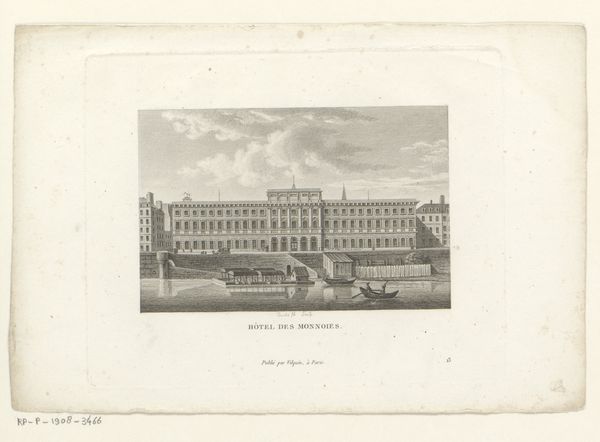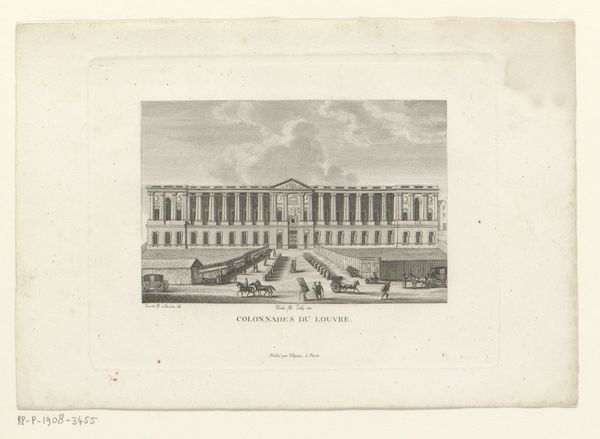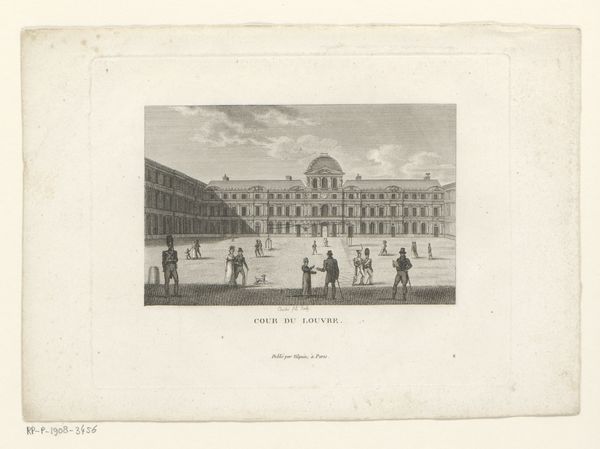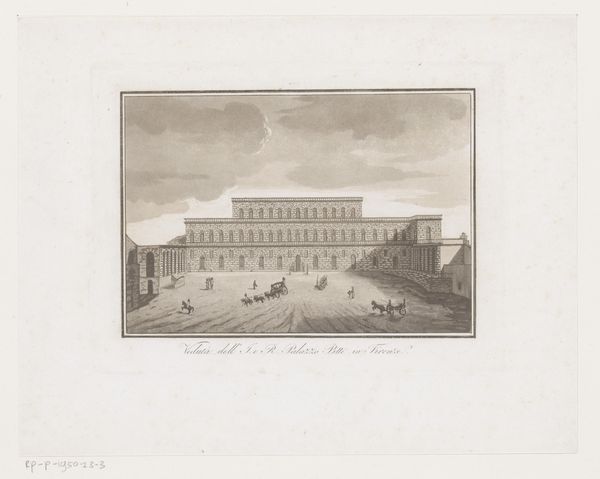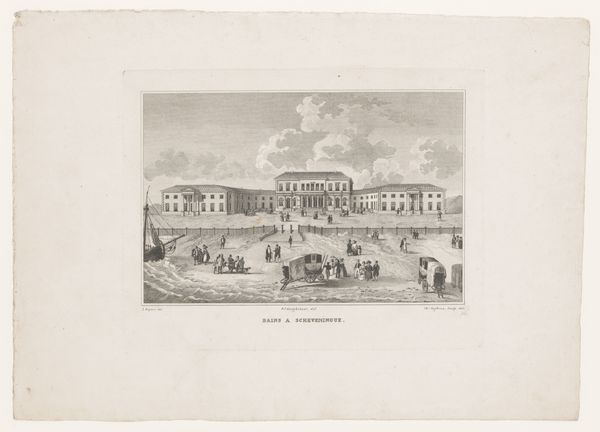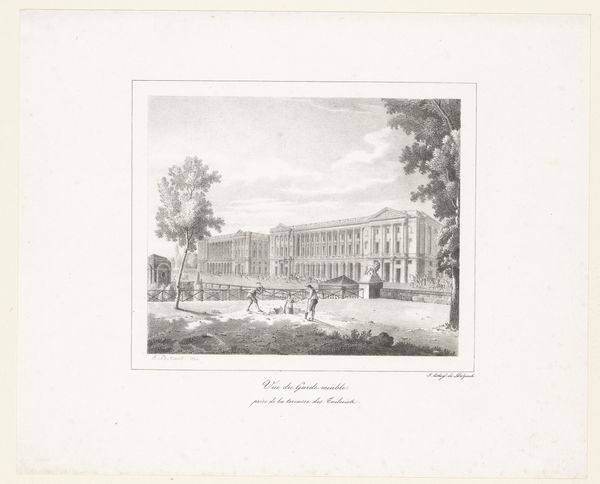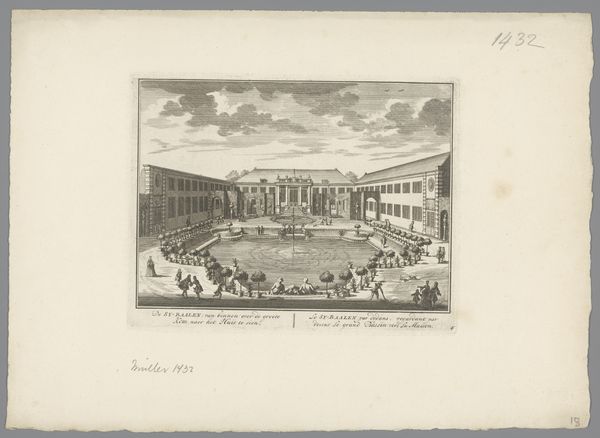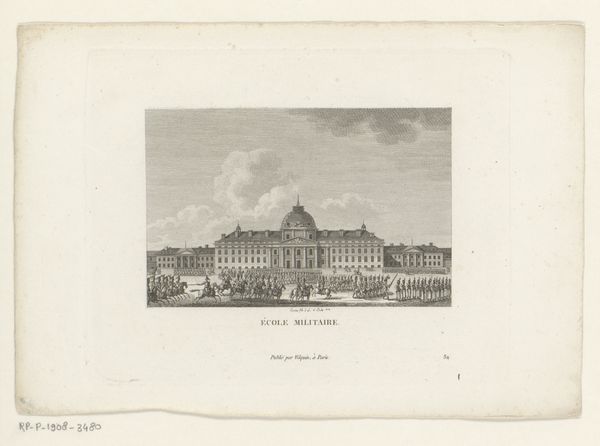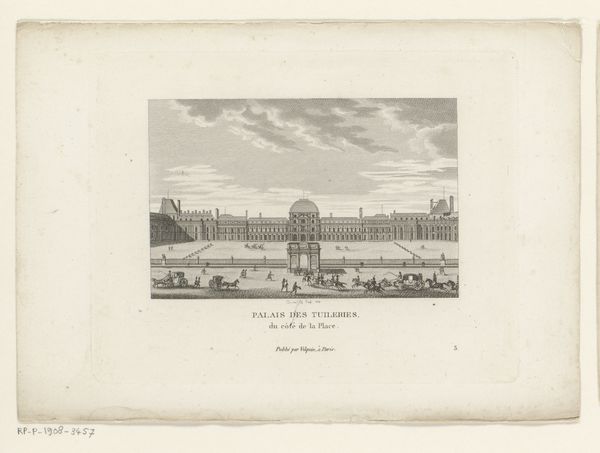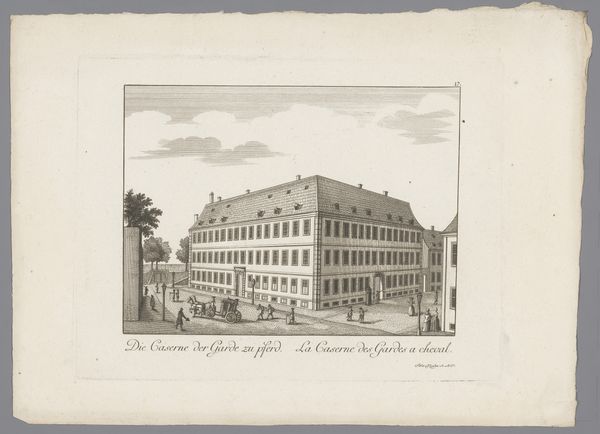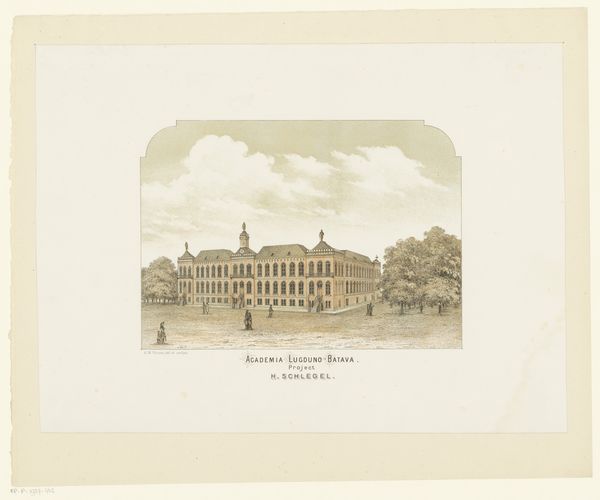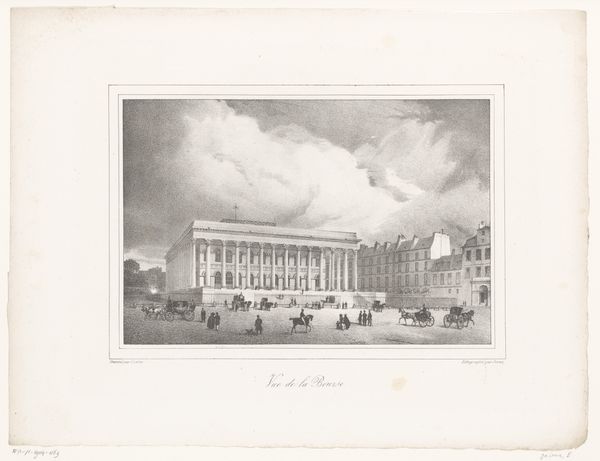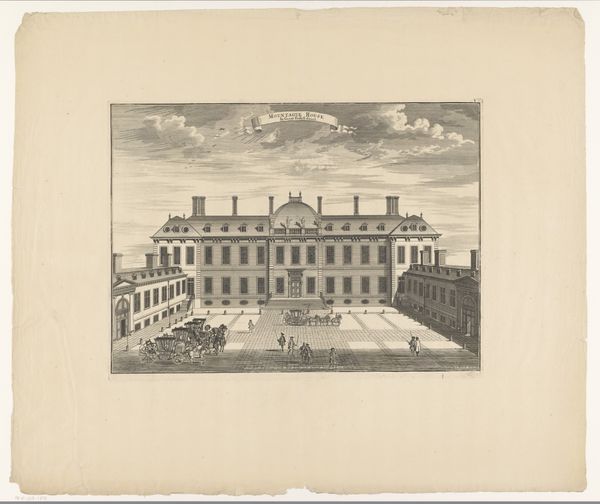
print, engraving
#
neoclacissism
# print
#
landscape
#
cityscape
#
engraving
Dimensions: height 124 mm, width 157 mm
Copyright: Rijks Museum: Open Domain
Curator: This engraving by François Louis Couché, dating back to 1818, gives us a glimpse into the Place de la Concorde in Paris. It’s part of the Rijksmuseum's collection. Editor: First thought? It feels so… ordered. Like everything's been perfectly placed according to a very strict set of rules. A little stiff, maybe, but definitely elegant. Curator: It embodies the neoclassical aesthetic—the symmetry, the grandeur, the almost theatrical sense of order—and these elements reflect the political climate of the time and its influence in art and society. How interesting is to think about the space between the French revolution and the establishment of new systems. Editor: The light and shadow in this engraving really highlight the geometry of the buildings and creates such a nice contrast to the activity in the plaza—horses, carriages, and figures that really bring scale. But do you get a feeling it misses… something? It feels distant from real life. Curator: Absolutely, this "distance" is telling. Neoclassicism aimed for an idealized version of reality. Look at the scale of public space in comparison to the people populating the artwork, how the city works as infrastructure that provides a way of organization to people. These details underline class structure through land use. The aristocracy could represent power through control over such an environment. Editor: That makes total sense, though I kind of prefer my plazas a bit more messy, more full of… life, and the complexities that real human interaction can have. Perhaps my modern sensibilities prefer art with a pulse, you know? This has a vibe like I'm peering into a pristine dollhouse. Curator: Well, and don’t forget that the site had recently been renamed after the French Revolution— previously named after Louis XV but turned into “Place de la Révolution”, and used for public executions including the execution of Louis XV himself. In that sense, the work tells a story about memory, trauma, and the need to reinvent social spaces. Editor: So it's like Couché is trying to sanitize a loaded location through formalism! Art as an… exercise in selective amnesia. Very complex. I love the way a seemingly simple cityscape becomes such an intricate piece once you begin pulling apart its layers. Curator: Exactly. And situating this within broader narratives of power, identity, and social memory encourages a richer understanding, isn’t it? Editor: It is. Thanks for guiding my vision, I can’t help seeing art under fresh lights after chats like this.
Comments
No comments
Be the first to comment and join the conversation on the ultimate creative platform.
